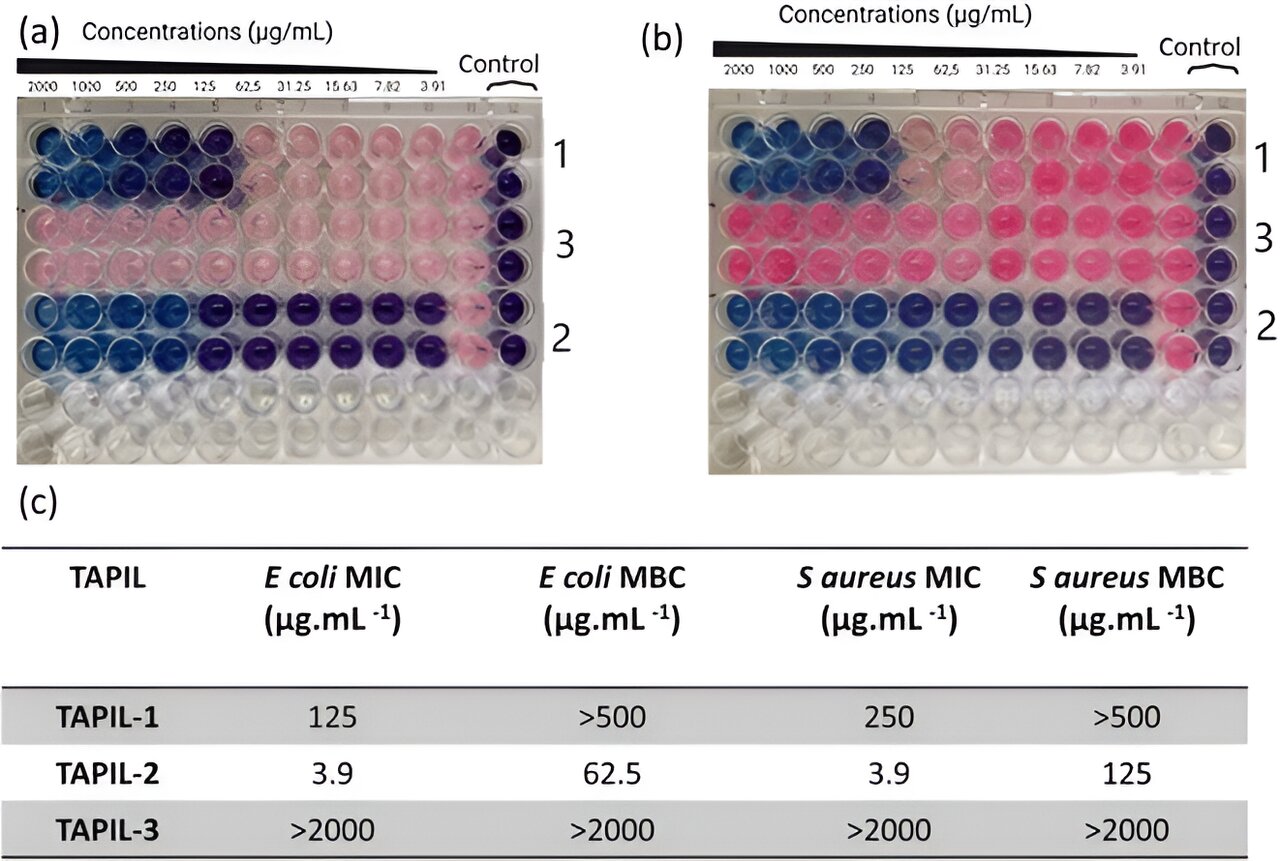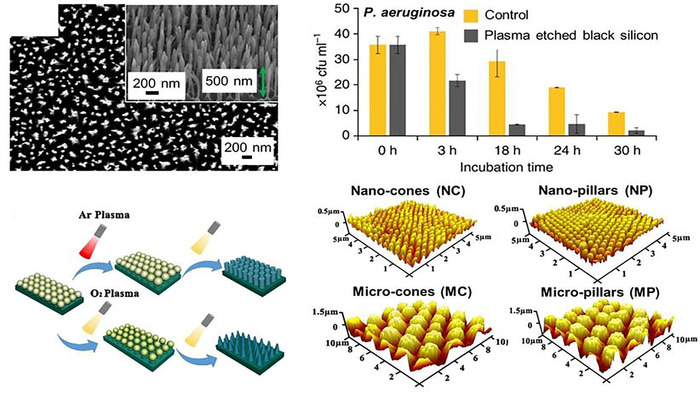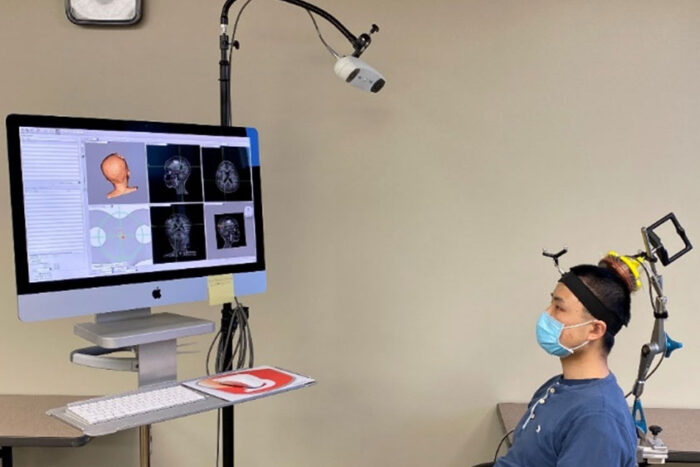
via Canadian Light Source
We’ve gained a new weapon in the fight against harmful and often antibiotic-resistant pathogens with the development of a unique material engineered to limit disease spread and replace current cumbersome cleaning protocols on high-touch surfaces like door knobs and hand rails.
Using the Canadian Light Source (CLS) at the University of Saskatchewan (USask), researchers from the University of Windsor (UWindsor) have developed and tested a compound of ionic (salt-based) fluids and copper nanoparticles that can coat surfaces and provide germ-free protection that lasts far longer than conventional bleach-based cleaning. For Dr. Abhinandan (Ronnie) Banerjee, the composite material is far superior to “somebody with bleach and a rag trying to keep surfaces sanitized.”
Early in the Covid-19 pandemic, Banerjee and colleagues on the UWindsor’s Trant Team — a research group focused on synthetic bioorganic materials — set their sights on improving sanitizing protocols, which at the time often involved frequent application of compounds like bleach. “The problem with conventional sanitization techniques is it’s not a one-and-done kind of thing,” they said. “It requires a dedicated employee or automation” to keep surfaces germ free. Additionally, frequent wiping of a surface can etch the underlying material, creating even more opportunities for pathogens to gather.
The team came up with a material that takes advantage of copper’s natural germicidal properties. Now they’re formulating a new combination of materials that will be easy to apply to surfaces and durable. Banerjee explained the copper nanoparticles are electrostatically attracted to the cell walls of pathogens, “which they weaken and break down, essentially causing bacterial annihilation.”
The group’s results are published in the journal RSC Sustainability under the creative title “Lethal Weapon IL (Ionic Liquid).” A recently awarded provisional patent gives Banerjee and their team time to find an industrial sponsor to aid in the eventual commercialization of the microbial coating material.
Sima Dehghandokht, a UWindsor PhD student who brought her food microbiology expertise to the Trant group two years ago, said the material’s potential applications go beyond door knobs, hand rails and elevator buttons, to include hospitals, greenhouses, agri-food production facilities and even scientific labs “where we deal with pathogens and harmful bacteria all the time. This could make scientists’ lives easier.”
It is important, she added, to consider the harmful environmental effects of antimicrobials like bleach, given they need repeated applications and then product disposal.
Both researchers acknowledge there are still questions to be answered about the copper-based material. Determining exactly how long the coating remains effective is an important next step, as is exploring the antimicrobial effects of other nanoparticles like zinc and iron, both of which are “literally dirt cheap,” said Banerjee. “We need to look at how changing the properties of the nanoparticles may have an effect on extending the antimicrobial life of the coating but also maybe killing more aggressive bacteria that are not easily killed by a simple rub with bleach.”
“We also need to check the toxicity of the compound,” said Dahghandokht, to determine if contact with the material could cause an allergic reaction. Fortunately, the Trant Team has access to a 3D bioprinter that can replicate human skin cell lines for further testing.
Banerjee and Dahghandokht agree having access to CLS technology is, and remains, critical to the development of their antimicrobial coating.
“We could not have done this work without the high-intensity light of the CLS,” Banerjee said. “We were able to see what’s happening with the copper nanoparticles over time and how they released a payload that is toxic to bacteria. It (the CLS) has been an integral part of this research.”
Original Article: Battling antibiotic-resistant pathogens one door knob at a time
More from: Canadian Light Source | University of Windsor | University of Saskatchewan
The Latest Updates from Bing News
Go deeper with Bing News on:
Antimicrobial coating
- Nonabsorbable Multifilament Suture Market Size, To Witness Promising Growth Rate 5.6% by 2033
According to Market.us, the Nonabsorbable Multifilament Suture Market size is projected to surpass around USD 10 billion by 2033, from USD 6 billion in 2023, and it is poised to reach a registered ...
- Nanophase Technologies Corporation (PNK:NANX) Q1 2024 Earnings Call Transcript
April 24, 2024 Nanophase Technologies Corporation isn't one of the 30 most popular stocks among hedge funds at the end of the third quarter (see the details here). Operator: Thank you for standing by, ...
- Forecasted Growth: AMEA Nanotechnology Photocatalysis Surface Coating Industry Set to Reach US$ 255.2 Million by 2033
The AMEA (Asia and Middle East and Africa) nanotechnology photocatalysis surface coating industry value is predicted to increase from US$ 85.3 million in 2023 to US$ 255.2 million by 2033. Over the ...
- The Biggest Differences Between Black Beans And Kidney Beans
Black beans and kidney beans are both popular legumes for a reason. But they are not always interchangeable in recipes! Here are the differences, explained.
- Light-activated propulsion spins bacteria-shredding micromotors
The four spikes on a new nanocrystal developed in Spain spin up under light and move through liquid, blasting any bacteria unfortunate to be in their path. The development could spell trouble for ...
Go deeper with Bing News on:
Synthetic bioorganic materials
- Synthetic nanomaterial could be an effective tool for treating neurodegenerative diseases
A newly developed nanomaterial that mimics the behavior of proteins could be an effective tool for treating Alzheimer's and other neurodegenerative diseases.
- From ‘shrimp leather’ to synthetic dye, are biomaterials finally ready to scale up?
However, after at the 10th anniversary of the Biofabricate Summit earlier this year (the densest gathering of bio innovators in the world) it seems that biotech has finally reached maturity.
- Exploring Unconventional Superconductivity in Synthetic and Natural Materials
In another development, researchers from MIT observed new unconventional superconducting behaviors in the synthetic material iron selenide (FeSe). 5 Under specific conditions, often at extremely low ...
- Self-assembling synthetic cells act like living cells with extra abilities
Using DNA and proteins, scientists have created new synthetic cells that act like living cells. Blurring the line between artificial and living materials, these cells can be reprogrammed to perform ...
- Synthetic material could improve ease and cut cost of gut microbiome research
A team of Penn State researchers has developed a new synthetic material that could enable scientists to more easily study how microorganisms interact with the gastrointestinal (GI) system.










